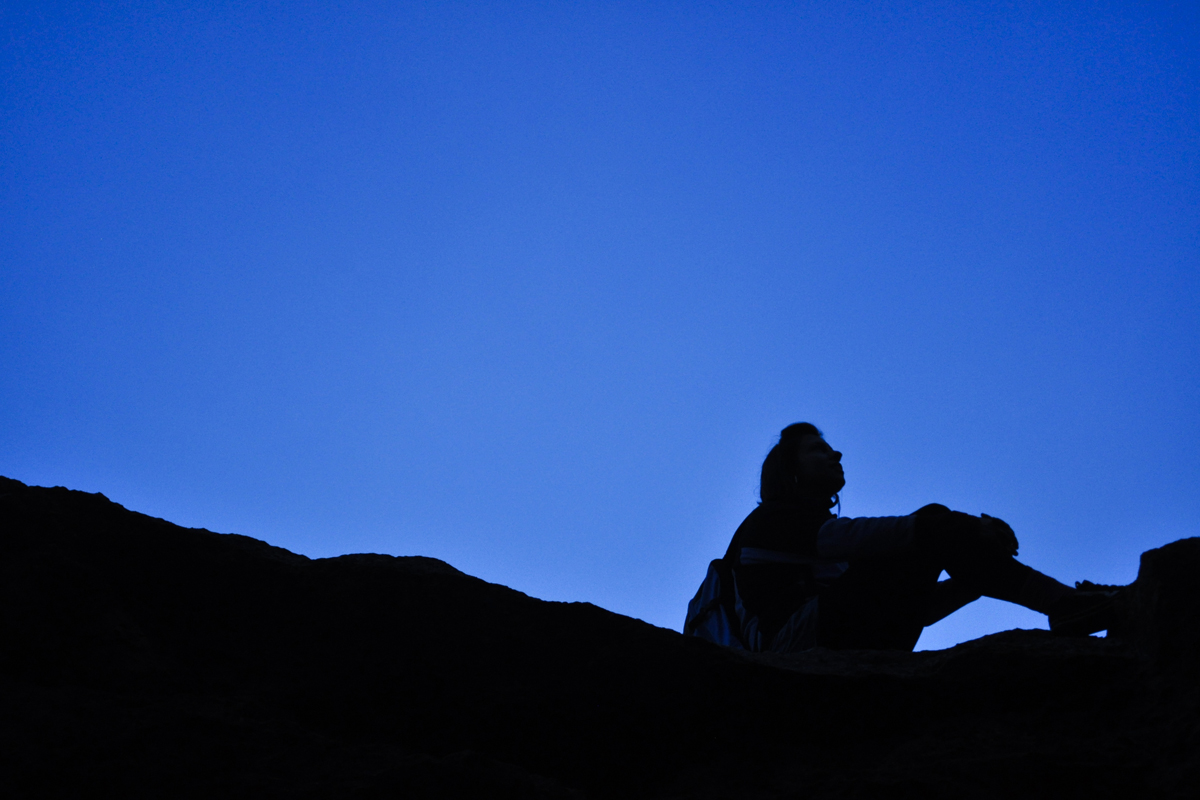Take a stroll on Logan’s hiking trails
As the school year winds down, deadlines are either here or just passing, finals are looming and the sun is finally coming out to warm the cold, dreary landscape. This time of year, stress seems to increase, but luckily Bear River Mountains and Cache Valley National Forest are only minutes away from campus. Hiking is not only a great way to forget about finals for a while but also a way to experience something that is unique to USU.
Logan Canyon offers hiking trails that are only minutes up the canyon. As one sets out to experience these trails, one resource is the Logan Ranger District Visitor Center, located at the mouth of Logan Canyon.
The building itself isn’t nice to look at, but the information inside can help those wishing to experience these hiking trails. The Visitor Center offers free pamphlets of information on hikes in the canyon and the Cache Valley National Forest.
“The Stokes Nature Center and river trail is used all the time,” Utah State Parks and Recreation Ranger Mert Russo said. “The Wind Caves are also really popular.”
The Wind Cave trail is almost four miles round trip. The trail leads to a “delicate triple arch and natural cave near the top of the China Wall geologic formation on the north side of the canyon,” stated the Cache Valley Hiking Trail Guide, printed by the Cache Valley Visitors Bureau.
“The river trail is a nice easy nature hike,” Russo said.
The river trail follows the river on the opposite side of the highway. On the river trail, one may stop by the Stokes Nature Center to learn more about Logan Canyon as he or she hikes toward Second Dam.
“My favorite trail is the Richard’s Hollow trail which leads down to Blacksmith Fork. If you are looking for waterfalls and pretty scenes, go there,” Russo said. “The best is to hike in, spend the night and then hike out the next day.”
The Tony Grove area up the canyon is full of hiking, cross-country skiing and fishing.
“You can do the Tony Grove area but I usually snow-mobile up there, I’m not sure about hiking this time of year,” Russo said.
From UtahAvalancheCenter.org, the April 22 forecast from the Tony Grove Snotel reports that there is still 144 inches of snow up at the station. The change of altitude from 4,465 feet in Logan to 8,400 feet at Tony Grove tends to keep snow lasting into the spring and summer months.
“You can do the lower elevation trails now, but you should probably wait another month or so for the higher elevation trails like Tony Grove. One thing though, you shouldn’t hike on muddy trails because it rips up the trail, so make sure it has dried out,” Russo said.
The Outdoor Recreation Program (ORP), located on campus next to the stadium, provides snowshoeing equipment, cross-country skis, alpine-touring skis, telemark skis and even avalanche probes and kits at reduced cost to students. The ORP also rents backpacks, tents and sleeping bags to allow students to go camping without needing their own gear.
“There are a bunch of cross-country trails that you can do. A popular beginner trail is Green Canyon,” said Paul Reinhardt, ORP shop attendant.
Located on the eastern mountainside of North Logan, the Green Canyon area is one of the groomed areas designed for cross country skiing.
“The problem you have right now in spring is the avalanches,” Reinhardt said. With the snow melting during the day and freezing at night, the mountain is dangerous to hike and ski on without prior knowledge.
“We have a heating and freezing cycle that makes the snow brittle and leaves slabs that can fall which makes it very dangeous,” he said.
The ORP offers classes on avalanche safety and rents beacon kits, but most of the classes have already occurred this year.
“As far as hiking goes a great summer trail is the Jardine Juniper trail,” Reinhardt said, “right now a good trail is the river trail.”
City trails are also an option, like The Bonneville Shoreline Trail just west of campus, a hiking trail only 2 miles long and has already thawed out.
“I enjoyed the Bonneville Shoreline trail as a nice day hike for the casual hiker. It is by far the easiest way to get views of Cache Valley and even clear views up to Idaho on a good day,” said Joseph Virgil, a sophomore in recreation resource management. “The major drawback for the trail is at times it can be crowded, not only by hikers but dogs as well.”
He said, “What makes hiking so important is not just the physical activity of it but the ability to get away from the busy everyday life that drives us up the walls at times. There is also a spiritual aspect to being among nature that can never be replicated by man-made amusement.”
– alexander.h.van_oene@aggiemail.usu.edu

